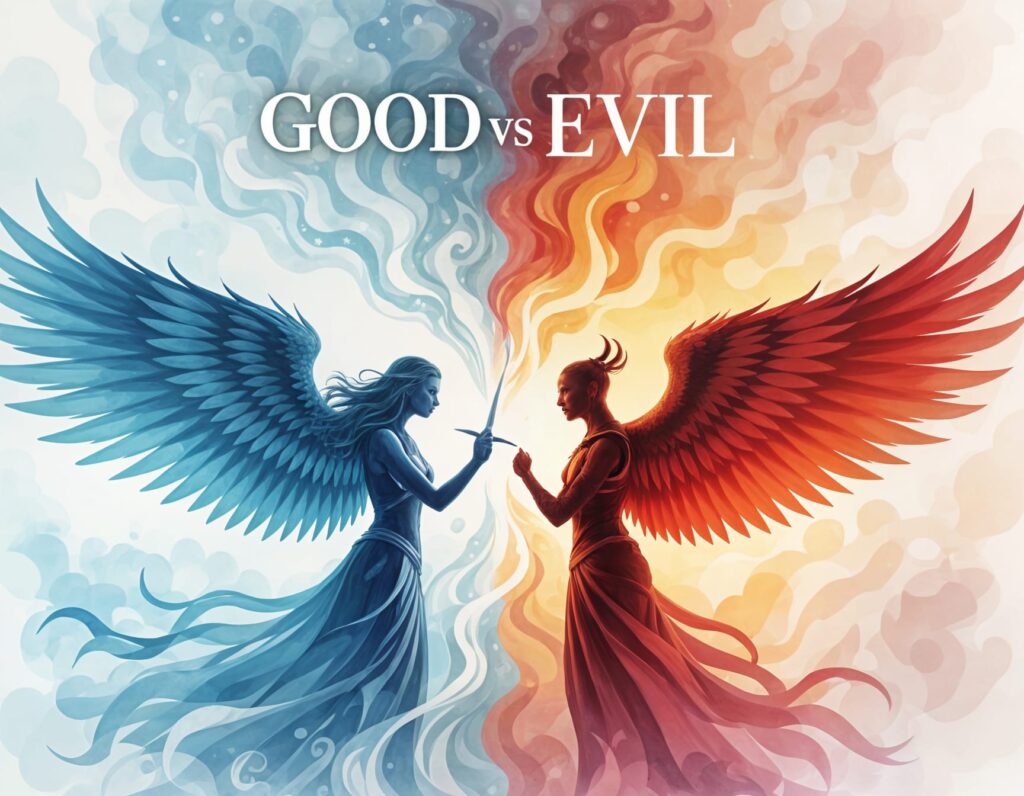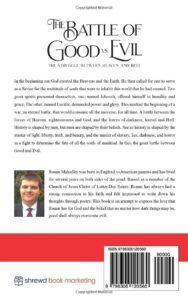In our modern day, perpetually outraged world, we’ve become masterful at identifying enemies. We draw battle lines with surgical precision: progressive versus conservative, urban versus rural, vaccinated versus unvaccinated, believer versus atheist. We’ve turned political affiliation into tribal identity, made sexual orientation a battlefield, and transformed every policy disagreement into an existential crisis.
But what if we’re looking in all the wrong places?

The Comfort of Surface-Level Conflict
There’s something oddly comforting about these readily visible divisions. They’re clean, categorical, and most importantly, they don’t require us to look too deeply into ourselves. When we can point to someone’s skin color, political yard sign, or religious affiliation as the source of society’s problems, we’re engaging in what psychologists call “Fundamental Attribution Error” on a massive scale—attributing complex social problems to simple, observable characteristics rather than examining the deeper currents of human behavior.
Consider how much easier it is to blame “Republicans” or “Democrats” for societal decay than to ask whether we ourselves have contributed to a culture of dishonesty, greed, or indifference. How much simpler to point at racial tensions than to examine whether we’ve personally acted with genuine compassion toward those different from us. How convenient to rage against “the other side” rather than confront the uncomfortable question: Have I chosen good or evil in my own daily decisions?
The Polarity We Don't Want to Face
Good versus evil isn’t a religious concept—it’s a human one. Strip away all the theological language, and you’re left with something far more fundamental: the choice between actions that build up and actions that tear down, between words that heal and words that wound, between decisions made with genuine care for others and decisions made purely for self-interest.
This is the polarity that makes us squirm because it’s personal. It can’t be deflected onto political parties or demographic groups. It lives in the space between our ears, in the moment of decision when no one is watching, in the choice between telling the truth or telling a convenient lie.
Why We Avoid the Real Mirror
The reason we don’t talk about good versus evil as the primary human division is brutally simple: it would require accountability. And accountability is the kryptonite of modern discourse.
When we blame systemic racism, we can avoid examining our own prejudices. When we blame partisan politics, we can avoid looking at our own willingness to demonize those who disagree with us. When we blame economic inequality, we can avoid questioning our own generosity or lack thereof. When we blame social media algorithms, we can avoid confronting our own addiction to outrage and validation.
But good versus evil? That’s a mirror that reflects back our own choices, our own character, our own moral fiber. It asks uncomfortable questions like:
- Do I treat people with dignity even when they can’t do anything for me?
- Do I tell the truth even when it costs me something?
- Do I take responsibility for my mistakes, or do I deflect and blame others?
- Do I genuinely care about justice, or do I only care when injustice affects me or my tribe?
- Do I build bridges or burn them?
- Do I add light to the world or darkness?
The Uncomfortable Mathematics of Morality
Here’s what the good versus evil framework reveals that our current obsession with demographic and political divisions obscures: moral character cuts across every conceivable human category.
There are Democrats who lie, cheat, and manipulate just as there are Republicans who do the same. There are white people who sacrifice for others and black people who exploit their own communities, just as the reverse is true. There are straight people who spread hatred and gay people who choose love, and vice versa. There are religious people who embody cruelty and atheists who demonstrate profound compassion—and again, the opposite.
The mathematics are simple: in every human group, you’ll find both those who consistently choose actions that uplift others and those who consistently choose actions that serve only themselves, often at others’ expense. The ratios might vary, the cultural expressions might differ, but the fundamental division between those who choose good and those who choose evil transcends every surface-level category we use to organize our tribal hatreds.
What Good vs Evil Actually Looks Like
Unlike our surface-level divisions, good versus evil isn’t about ideology—it’s about integrity. It’s not about what you believe, but how you behave. It’s not about your identity markers, but about your character choices.
Evil in this context isn’t cartoon villainy with mustache-twirling and maniacal laughter. It’s far more mundane and therefore far more dangerous:
- The willingness to harm others for personal gain
- Chronic dishonesty, especially self-serving lies
- Treating people as objects to be used rather than humans to be respected
- Refusing to take responsibility for the consequences of one’s actions
- Deliberate cultivation of division and hatred for personal or political advantage
- Indifference to genuine suffering when addressing it would be inconvenient
Good isn’t perfection or sainthood. It’s the consistent choice to:
- Act with genuine care for others’ wellbeing
- Tell the truth even when it’s costly
- Take responsibility for mistakes and work to make amends
- Treat all people with basic dignity regardless of their usefulness to you
- Build understanding and connection rather than division
- Sacrifice personal comfort when necessary to address genuine injustice or suffering
The Revolutionary Implications
If we started organizing our understanding of human conflict around good versus evil rather than our current menu of surface-level divisions, everything would change.
Political coalitions would have to reorganize around character rather than ideology. We’d find ourselves allied with people we currently consider enemies, and opposed to people we currently defend simply because they share our demographic characteristics or political affiliation.
We’d have to stop excusing terrible behavior from “our side” and start acknowledging admirable behavior from “their side.” We’d be forced to evaluate leaders not by their political positions but by their integrity, not by their promises but by their track record of truthfulness and genuine care for others.
Most challenging of all, we’d have to stop pointing fingers long enough to examine our own hands.
The Mirror We're Afraid to Hold Up
The reason good versus evil feels so uncomfortable as a framework isn’t because it’s simplistic—it’s because it’s accurate. It cuts through our carefully constructed justifications and forces us to confront the fundamental choice that underlies every human interaction: Will I act in a way that makes the world a little better or a little worse?
This doesn’t mean abandoning important conversations about systemic issues, historical injustices, or policy differences. These conversations matter. But it does mean recognizing that these surface-level divisions are symptoms, not causes, of our deeper human struggle between selfishness and compassion, between truth and convenient fiction, between love and fear.
The Choice That Defines Us
In the end, every other human division is negotiable. Race is a social construct. Political affiliation can change. Religious beliefs evolve. Economic status fluctuates. Even sexual orientation can be more fluid than our rigid categories suggest.
But the choice between good and evil? That’s the one division that actually defines who we are as individuals and who we become as a society. It’s the choice we make in countless small moments every day, usually when no one is watching, often when it’s easier to choose otherwise.
The tragedy of our current moment isn’t that we’re divided by race, politics, or religion. The tragedy is that we’ve become so focused on these surface-level divisions that we’ve lost sight of the only division that actually matters—the one that runs straight through the center of every human heart.
Until we’re willing to look in that mirror and ask ourselves which side we’re really on, all our other battles are just noise, fury, and distraction from the one war that will actually determine our future: the eternal struggle between those who build up and those who tear down, between those who tell the truth and those who traffic in lies, between those who love and those who hate.
The question isn’t whether you’re black or white, Republican or Democrat, straight or gay, religious or secular. The question is simpler and infinitely more important: When the moment comes to choose between good and evil—and it comes more often than we’d like to admit—which side do you choose?
The answer to that question is the only division that will matter when history judges us all.
Hey there! We hope you love our fitness programs and the products we recommend. Just so you know, Symku Blog is reader-supported. When you buy through links on our site, we may earn an affiliate commission at no extra cost to you. It helps us keep the lights on. Thanks.
Disclaimer: The information provided in this discussion is for general informational and educational purposes only. It is not intended as medical or professional advice. Only a qualified health professional can determine what practices are suitable for your individual needs and abilities.


